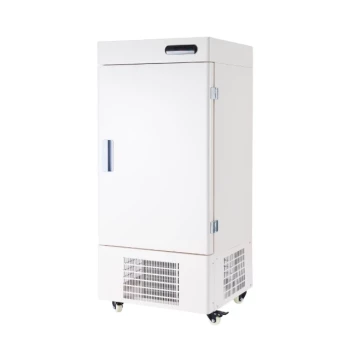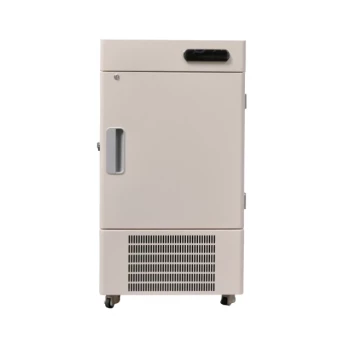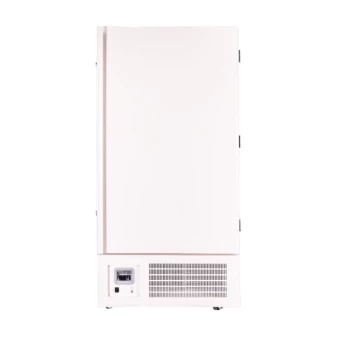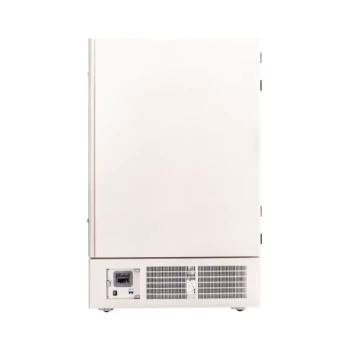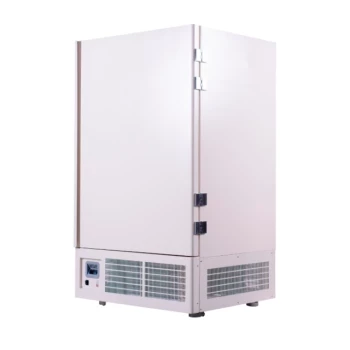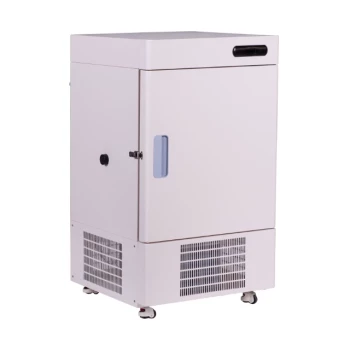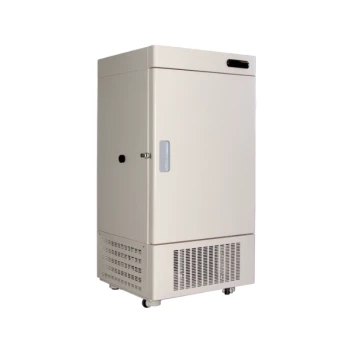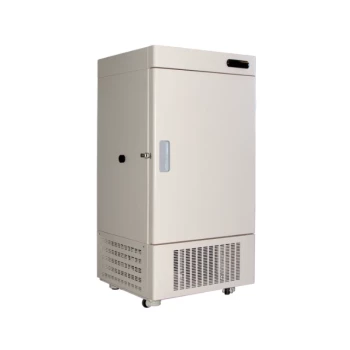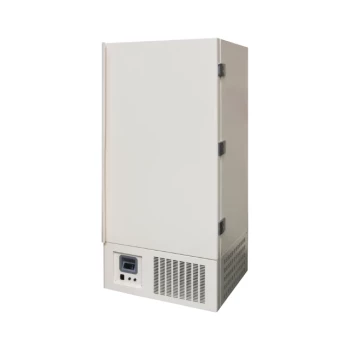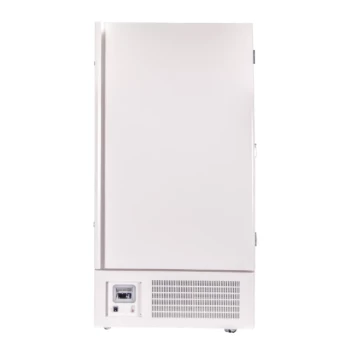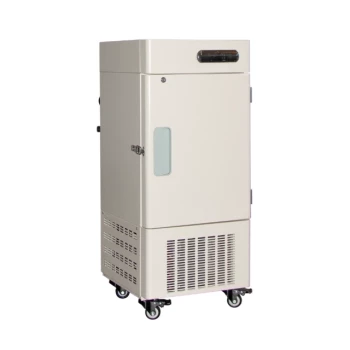In short, the internal storage capacity of a standard ultra-low temperature (ULT) freezer typically ranges from 200 to 800 litres. This capacity is designed to accommodate a high density of biological samples, such as vaccines, tissues, or DNA, which are stored in boxes on internal shelving units.
Choosing the right ULT freezer is not just about its total volume. The decision must balance storage capacity against critical factors like temperature stability, energy efficiency, and the internal features that directly protect your irreplaceable samples.
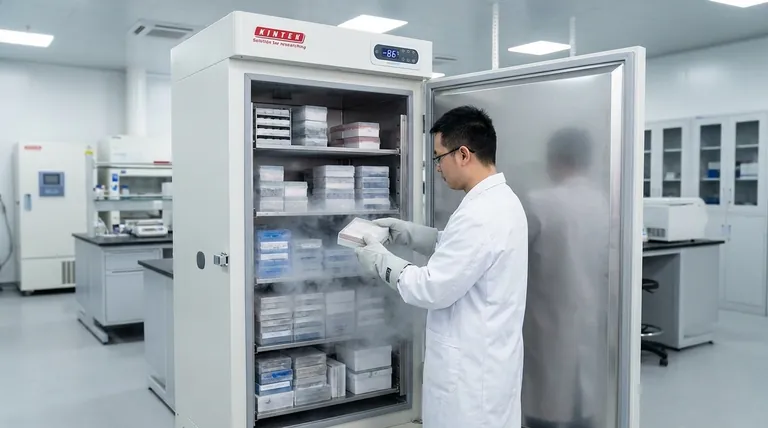
What "Capacity" Really Means in a ULT Freezer
The advertised volume in litres is the starting point. To make an informed decision, you must understand how that volume translates into usable, secure storage for your specific application.
The Standard Volume Range
Most upright ULT freezers fall within the 200 to 800-litre capacity range. Smaller models are suitable for individual research groups or labs with limited space, while larger units are built for high-throughput facilities and long-term biorepositories.
The Importance of Internal Organization
Modern ULT freezers are not empty boxes. They contain a system of shelves, each often protected by its own insulated inner door.
This compartmentalized design is critical. It minimizes the loss of cold air when you retrieve samples from one section, protecting the rest of the freezer's contents from temperature fluctuations.
Usable Space vs. Total Volume
The true storage capacity depends on your racking system. The freezer's total volume must accommodate both your sample boxes and the metal racks that hold them, meaning the usable space is always less than the total advertised volume. Planning your internal layout is essential to maximizing storage density.
Core Features That Ensure Sample Integrity
A freezer's capacity is irrelevant if it cannot reliably protect its contents. The value of the stored samples often far exceeds the cost of the unit itself, making the following features non-negotiable.
Precision Temperature Control
A ULT freezer's primary job is to maintain a stable temperature, typically adjustable between -40°C and -86°C. The quality of the freezer is determined by its ability to hold a precise setpoint with minimal fluctuation, a feature known as temperature homogeneity.
Advanced Cooling Systems
These extreme temperatures are achieved using powerful cascade refrigeration systems. These dual-compressor systems are engineered for reliability and rapid "pull-down," bringing the chamber to its setpoint quickly after installation or defrosting.
Robust Construction and Insulation
High-quality units feature a stainless steel interior for durability and ease of cleaning. This is surrounded by thick, advanced insulation and tightly sealed doors to prevent temperature creep and reduce energy consumption. Features like heated pressure release valves make doors easier to open after they have been sealed shut by the extreme cold.
Critical Monitoring and Alarms
Modern ULT freezers are equipped with sophisticated safety systems. This includes audible and visual alarms that activate if the temperature deviates from the setpoint or if a door is left ajar.
Many units also include data logging capabilities, providing a continuous record of temperature performance to meet regulatory and quality control standards.
Understanding the Trade-offs
Selecting a ULT freezer involves balancing competing priorities. Being aware of these trade-offs is key to avoiding common pitfalls.
Larger Capacity vs. Energy Consumption
A larger freezer provides more storage but comes with a higher energy cost and greater heat output into the lab. This can place a significant load on your facility's HVAC system and electrical circuits.
Physical Footprint and Lab Space
Do not underestimate the physical size of the unit. A high-capacity freezer requires significant floor space and clearance for airflow around the unit. Always measure your intended location—including doorways and hallways—before purchasing.
Upfront Cost vs. Long-Term Security
Base models may appear cost-effective, but they often lack the advanced monitoring, rapid temperature recovery, and superior insulation of premium units. Investing in better features is an investment in the security of your samples.
Making the Right Choice for Your Goal
Your primary objective should guide your selection.
- If your primary focus is maximizing storage in a large facility: Opt for a larger 700-800L freezer, but first confirm that your lab has the necessary electrical capacity and HVAC support to handle its energy demands.
- If your primary focus is supporting a small lab or specific project: A smaller 200-400L model will provide sufficient storage while saving valuable floor space and reducing energy costs.
- If your primary focus is storing high-value, irreplaceable samples: Prioritize features over raw capacity. Select a freezer with the best temperature recovery, most comprehensive alarm system, and most reliable data logging you can afford.
Ultimately, choosing a ULT freezer is a strategic investment in the long-term viability of your research.
Summary Table:
| Capacity Range | Typical Use Case | Key Considerations |
|---|---|---|
| 200 - 400L | Small labs, individual projects | Saves space, lower energy consumption |
| 400 - 700L | Medium-sized facilities, core labs | Balances storage with energy use |
| 700 - 800L | High-throughput facilities, biorepositories | Requires robust HVAC and electrical support |
Ready to secure your irreplaceable samples? Choosing the right ultra-low temperature freezer is critical for the integrity of your vaccines, tissues, and DNA samples. At KINTEK, we specialize in providing reliable lab equipment tailored to your specific needs. Our experts can help you select a ULT freezer with the perfect balance of capacity, temperature stability, and energy efficiency for your laboratory. Don't leave your research to chance—contact us today for a personalized consultation and ensure your samples are protected for the long term.
Visual Guide
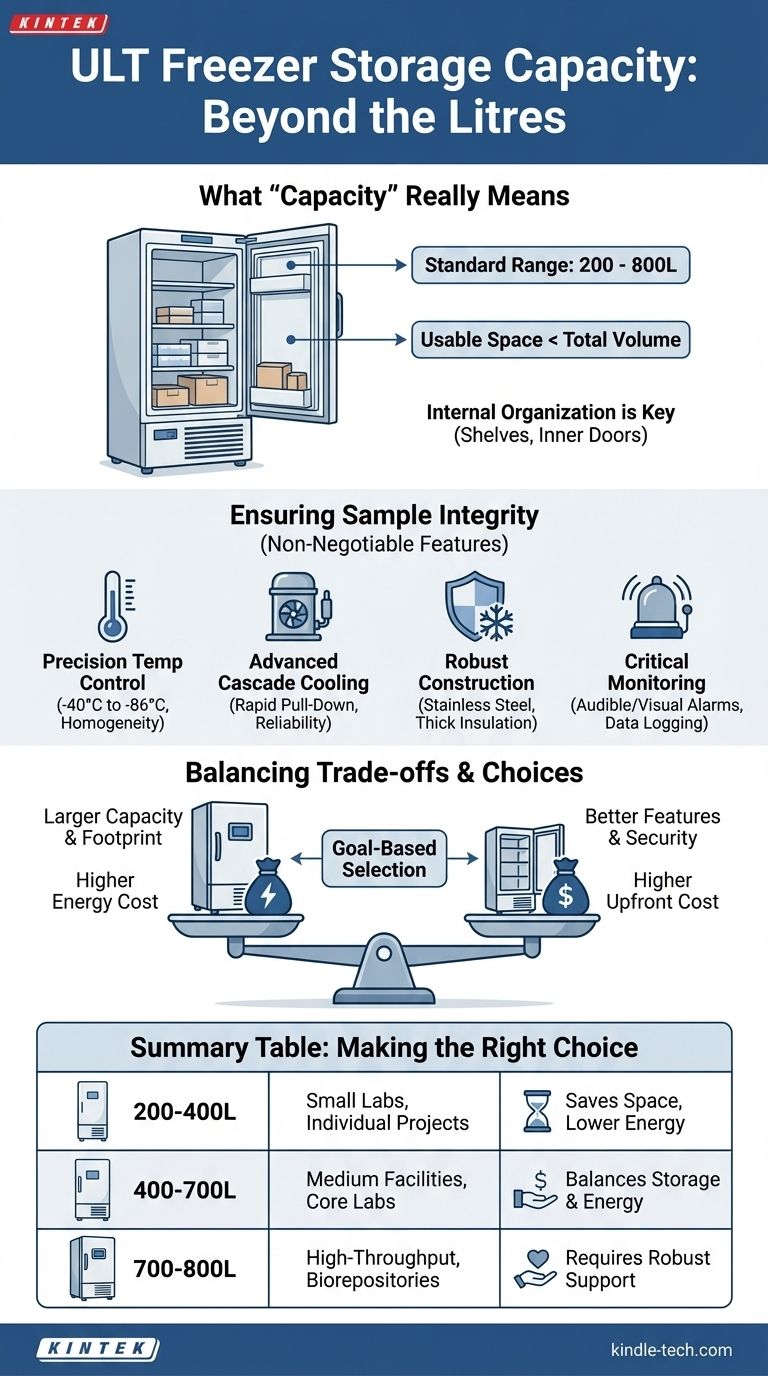
Related Products
- 158L Precision Vertical Ultra Low Freezer for Laboratory Applications
- 58L Precision Laboratory Ultra Low Temperature Upright Freezer for Critical Sample Storage
- 508L Advanced Vertical Ultra Low Temperature Freezer for Critical Laboratory Storage
- 938L Vertical Ultra Low Temperature Freezer for Advanced Laboratory Storage
- 808L Precision Laboratory Vertical Ultra Low Temperature Freezer
People Also Ask
- What temperature range do Ultra-Low Temperature freezers maintain? The -80°C Standard for Sample Integrity
- What makes Ultra-Low Temperature freezers energy efficient? Key Design & Operational Strategies
- What are ultra-low temperature freezers designed for? Preserving Your Most Valuable Biological Samples
- What features do ultra-low temperature freezers typically include? Ensuring Absolute Sample Security
- In what fields are ultra low temperature freezers most commonly used? Essential for Biomedical, Clinical, and Research Labs
